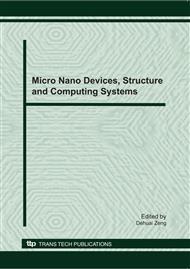p.1
p.7
p.13
p.17
p.23
p.29
p.35
p.41
p.46
A Study on Physical Technology of Induced-Resistance for Chinese Cabbages
Abstract:
When magnetic fields with the magnetic induction intensity of 0.4T, 0.8T, 1.2T, 1.6T and 2.0T are used to deal with germinating cabbage seeds for 5min, 10min, 15min and 20min separately, the results show that the appropriate combination of field strength and time can activate peroxidase (POD) and polyphenol oxidase(PPO) apparently, and decrease the content of MDA at the same time. Through the downy mildew inoculation tests, the magnetic field effects on the induced-resistance of Chinese cabbage are significantly lower than control, indicating that magnetic field treatment improve the Chinese cabbage downy mildew resistance by removing free radicals in plants, increasing the metabolism of plant’s secondary phenols and reduce the plant tissue within the cytoplasm of the cell membrane permeability and so on.
Info:
Periodical:
Pages:
23-28
Citation:
Online since:
December 2010
Authors:
Price:
Сopyright:
© 2011 Trans Tech Publications Ltd. All Rights Reserved
Share:
Citation:


